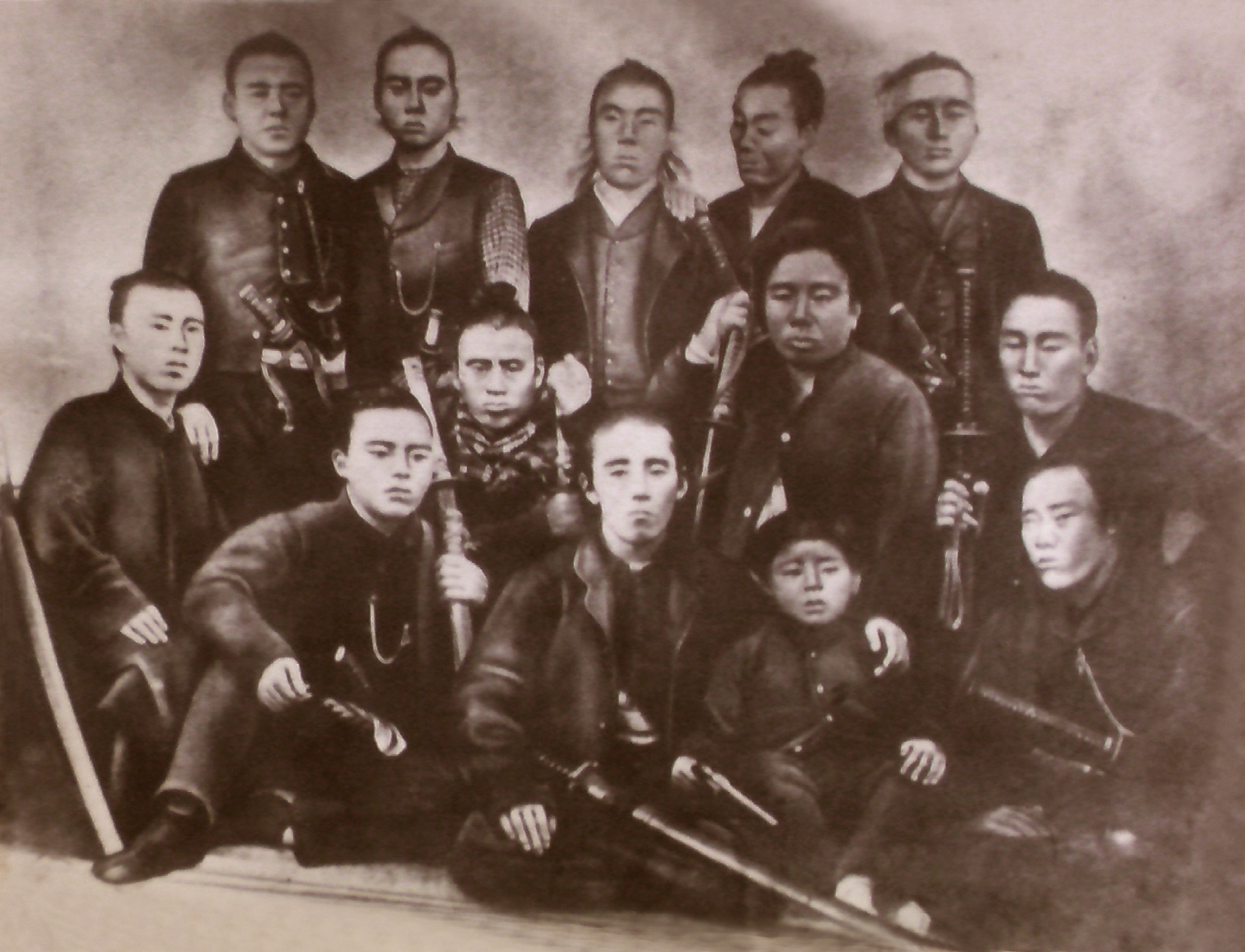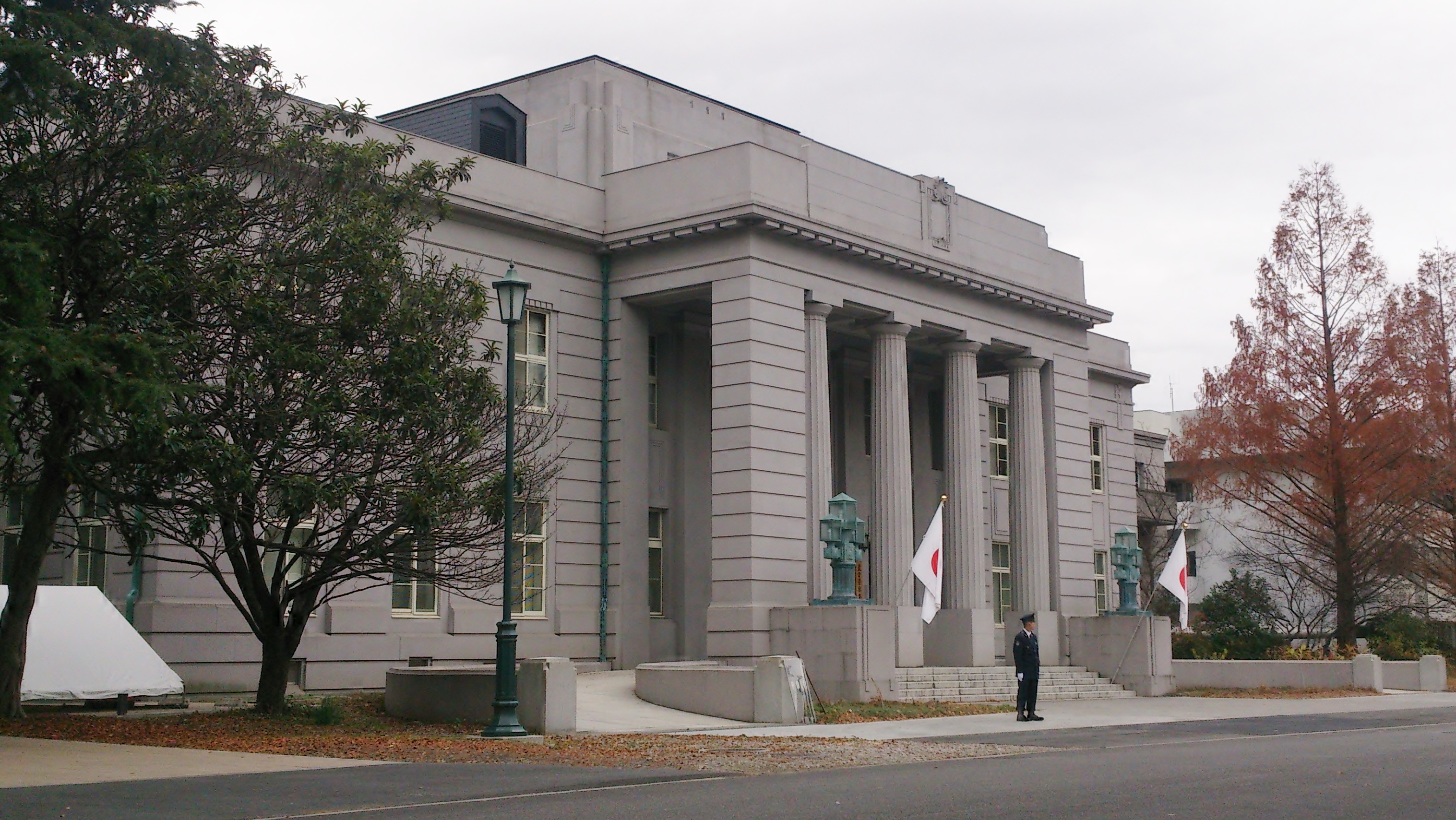|
Gakushūin
The or Peers School (Gakushūin School Corporation), initially known as Gakushūjo, is a Japanese educational institution in Tokyo, originally established to educate the children of Japan's nobility. Nussbaum, Louis-Frédéric. (2002)"Gakushū-in"in Japan Encyclopedia, p. 230. The original school expanded from its original mandate of educating the royal family and has since become a network of institutions which encompasses preschool through tertiary-level education. History The Peers' School was founded in 1847 by Emperor Ninkō in Kyoto."History of Gakushuin" at Gakushuin Women's College retrieved 2013-2-27. Its purpose was to educate the children of the Imperial aristocracy ('' ... [...More Info...] [...Related Items...] OR: [Wikipedia] [Google] [Baidu] |
Gakushuin University
is a private university in Mejiro, Toshima Ward, Tokyo. It was re-established after World War II as an affiliate of the Gakushūin School Corporation. The privatized successor to the original Gakushūin University (or "Peers School") was established during the Meiji period to educate the children of the Japanese nobility. It is still one of the most prestigious universities in Japan, counting most of the members of the present Imperial Family among its former or present students. The average number of students is capped so that each student can receive personal attention from the staff. Faculties * Faculty of Law * Faculty of Economics * Faculty of International Social Sciences * Faculty of Letters * Faculty of Science * Professional School of Law The university provides a range of Japanese-language classes for foreign students. Although designed for Japanese students, approximately 60 classes are held in English. Each year the University admits approximately 80 foreign stud ... [...More Info...] [...Related Items...] OR: [Wikipedia] [Google] [Baidu] |
Tani Tateki
was a statesman and lieutenant general in the Imperial Japanese Army in Meiji period Japan. He was also known as Tani Kanjō. Biography Early life Tani was born in Kubokawa village, Tosa Province (present-day Shimanto town, Kōchi Prefecture) as the 4th son of a Confucian scholar. All three of his elder brothers died in childhood, and he was given to his uncle to be raised as an upper-class ''samurai'' in the service of the Yamauchi clan. His abilities were soon noted by clan officials,a and he was sent for further studies in Edo in 1859. While in Edo, he studied under Yasui Sokken and other leading Confucian scholars, and returned to Tosa in 1861. In 1862, he was appointed an instructor at the ''Chidōkan'', the han school; however, he also became involved in the local ''Sonnō jōi'' movement led by Takechi Hanpeita. He was one of the members of Takechi's followers implicated in the assassination of Yoshida Tōyō. Following Takechi's arrest and execution, he was out of fav ... [...More Info...] [...Related Items...] OR: [Wikipedia] [Google] [Baidu] |
Gakushuin Women's College
is a private women's college in Shinjuku, Tokyo, Japan; part of the Gakushūin School Corporation (学習院). The predecessor of the school was founded in 1847 by Emperor Kōmei. It was chartered as a junior college in 1949 and became a four-year college in 1998. Gakushuin Women's College is also one of the main hosts of the International Theater Company London which comes from London to perform Shakespearean plays in English, directed by MBE Paul Stebbings and brought to Japan by Paula Berwanger. Past performances include A Midsummer Night's Dream, Romeo and Juliet and Twelfth Night ''Twelfth Night'', or ''What You Will'' is a romantic comedy by William Shakespeare, believed to have been written around 1601–1602 as a Twelfth Night's entertainment for the close of the Christmas season. The play centres on the twins Vi .... The 2020 performance of Othello was cancelled due to COVID-19. References External links Official website Educational institution ... [...More Info...] [...Related Items...] OR: [Wikipedia] [Google] [Baidu] |
Ōtori Keisuke
was a Japanese military leader and diplomat.Perez, Louis G. (2013)"Ōtori Keisuke"in ''Japan at War: An Encyclopedia,'' p. 304. Biography Early life and education Ōtori Keisuke was born in Akamatsu Village, in the Akō domain of Harima Province (modern-day Hyōgo), the son of physician Kobayashi Naosuke. At a young age, he entered the Shizutani school in Bizen, engaging in Chinese studies, and continued his education at the renowned Rangaku school of Ogata Kōan, where he studied Dutch language and medicine. Further learning was obtained in Edo, where Ōtori travelled to attend the school of Tsuboi Tadamasu, known for instructing students engaged in the study and translation of Dutch. While in Edo he also received education from Egawa Tarōzaemon regarding military strategy, and studied English with Nakahama Manjirō, thus coming into possession of an uncommonly thorough, for his era, appreciation of Western culture. As a result, in 1859, the Tokugawa shogunate appoi ... [...More Info...] [...Related Items...] OR: [Wikipedia] [Google] [Baidu] |
Emperor Ninkō
was the 120th Emperor of Japan, according to the traditional order of succession.Imperial Household Agency (''Kunaichō'') 仁孝天皇 (120)/ref> Ninkō's reign spanned the years from 1817 until his death in 1846, and saw further deterioration of the power of the ruling ''Shōgun''.Titsingh, Isaac. (1834). ''Annales des empereurs du japon'', p. 421. Disasters, which included famine, combined with corruption and increasing Western interference, helped to erode public trust in the bakufu government. Emperor Ninkō attempted to revive certain court rituals and practices upon the wishes of his father. However, it is unknown what role, if any, the Emperor had in the turmoil which occurred during his reign. His family included fifteen children from various concubines, but only three of them lived to adulthood. His fourth son, Imperial Prince Osahito became the next Emperor upon Ninkō's death in 1846. While political power at the time still resided with the ''Shōgun'', the be ... [...More Info...] [...Related Items...] OR: [Wikipedia] [Google] [Baidu] |
Miura Gorō
Viscount was a lieutenant general in the early Imperial Japanese Army. Biography Miura was born in Hagi in Chōshū Domain (modern Yamaguchi Prefecture), to a ''samurai'' family with the name of Andō, but was adopted by the Miura that was the family name of his father-in-law. After studying at the Meirinkan clan military academy, he entered the '' Kiheitai'' irregular militia of the Chōshū domain and played an active role in the Boshin War to overthrow the Tokugawa shogunate. He fought at the Battle of Hokuetsu. He later held various posts in Army-Navy Ministry under the Meiji government and was commander of the Hiroshima District. He helped suppress the Hagi Rebellion in his native Chōshū. During the Satsuma Rebellion, he served as commander of the Army's Third Brigade during the Battle of Tabaruzaka. In 1882, Miura was appointed commander of the Imperial Japanese Army Academy. In 1884, he accompanied Ōyama Iwao on a tour of Europe, to study the military systems ... [...More Info...] [...Related Items...] OR: [Wikipedia] [Google] [Baidu] |
Privy Council (Japan)
The was an advisory council to the Emperor of Japan that operated from 1888 to 1947. It was largely used to limit the power of the Imperial Diet. Functions Modeled in part upon the Privy Council of the United Kingdom, this body advised the Japanese Empire on matters including, but not limited to: * Proposed amendments to the Constitution of the Empire of Japan * Proposed amendments to the 1889 Imperial Household Law * Matters of constitutional interpretation, proposed laws, and ordinances * Proclamations of martial law or declaration of war * Treaties and other international agreements * Matters concerning the succession to the throne * Declarations of a regency under the Imperial Household Law; * Matters submitted by the Emperor directly The Privy Council had both judicial functions and certain executive functions. However, the council had no power to initiate legislation. Establishment To oversee new governmental developments, in 1871, three councils were created - th ... [...More Info...] [...Related Items...] OR: [Wikipedia] [Google] [Baidu] |
Imperial Japanese Army Academy
The was the principal officer's training school for the Imperial Japanese Army. The programme consisted of a junior course for graduates of local army cadet schools and for those who had completed four years of middle school, and a senior course for officer candidates. History and background Established as the ''Heigakkō'' in 1868 in Kyoto, the officer training school was renamed the Imperial Japanese Army Academy in 1874 and relocated to Ichigaya, Tokyo. After 1898, the Academy came under the supervision of the Army Education Administration. In 1937 the Academy was divided, with the Senior Course Academy being relocated to Sagamihara in Kanagawa prefecture, and the Junior Course School moved to Asaka, Saitama. The 50th graduation ceremony was held in the new Academy buildings in Sagamihara on 20 December 1937, and was attended by the Shōwa Emperor ( Emperor Hirohito) himself. In 1938, a separate school was established for military aviation officers. During World War II, the ... [...More Info...] [...Related Items...] OR: [Wikipedia] [Google] [Baidu] |
Imperial Japanese Army
The was the official ground-based armed force of the Empire of Japan from 1868 to 1945. It was controlled by the Imperial Japanese Army General Staff Office and the Ministry of the Army, both of which were nominally subordinate to the Emperor of Japan as supreme commander of the army and the Imperial Japanese Navy. Later an Inspectorate General of Aviation became the third agency with oversight of the army. During wartime or national emergencies, the nominal command functions of the emperor would be centralized in an Imperial General Headquarters (IGHQ), an ad hoc body consisting of the chief and vice chief of the Army General Staff, the Minister of the Army, the chief and vice chief of the Naval General Staff, the Inspector General of Aviation, and the Inspector General of Military Training. History Origins (1868–1871) In the mid-19th century, Japan had no unified national army and the country was made up of feudal domains (''han'') with the Tokugawa shogunate (''bakufu ... [...More Info...] [...Related Items...] OR: [Wikipedia] [Google] [Baidu] |
Lieutenant General
Lieutenant general (Lt Gen, LTG and similar) is a three-star military rank (NATO code OF-8) used in many countries. The rank traces its origins to the Middle Ages, where the title of lieutenant general was held by the second-in-command on the battlefield, who was normally subordinate to a captain general. In modern armies, lieutenant general normally ranks immediately below general and above major general; it is equivalent to the navy rank of vice admiral, and in air forces with a separate rank structure, it is equivalent to air marshal. A lieutenant general commands an army corps, made up of typically three army divisions, and consisting of around 60 000 to 70 000 soldiers (U.S.). The seeming incongruity that a lieutenant general outranks a major general (whereas a major outranks a lieutenant) is due to the derivation of major general from sergeant major general, which was a rank subordinate to lieutenant general (as a lieutenant outranks a sergeant major). In contras ... [...More Info...] [...Related Items...] OR: [Wikipedia] [Google] [Baidu] |
Miike Domain
was a Japanese domain of the Edo period. It was associated with Chikugo Province in modern-day Fukuoka Prefecture on the island of Kyushu. In the han system, Miike was a political and economic abstraction based on periodic cadastral surveys and projected agricultural yields. In other words, the domain was defined in terms of '' kokudaka'', not land area.Elison, George and Bardwell L. Smith (1987)''Warlords, Artists, & Commoners: Japan in the Sixteenth Century,'' p. 18 This was different from the feudalism of the West. List of ''daimyōs'' The hereditary ''daimyō were powerful Japanese magnates, feudal lords who, from the 10th century to the early Meiji period in the middle 19th century, ruled most of Japan from their vast, hereditary land holdings. They were subordinate to the shogun and nominal ...s'' were head of the clan and head of the domain. Tachibana clan, 1621–1806; 1868–1871 ('' tozama''; 10,000 '' koku'') #Tanetsugu #Tanenaga #Taneakira #Ts ... [...More Info...] [...Related Items...] OR: [Wikipedia] [Google] [Baidu] |





